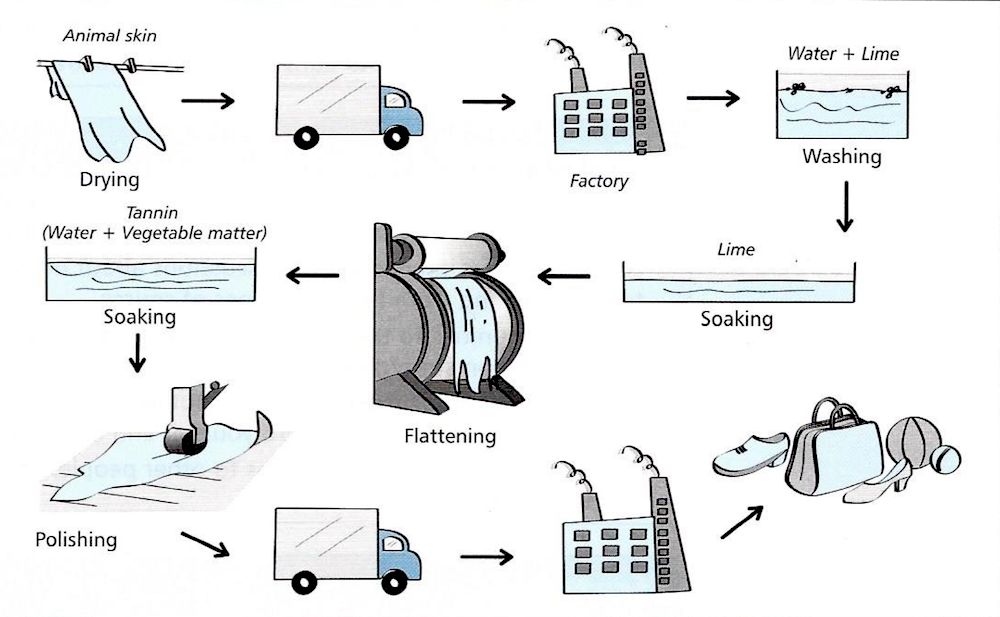The diagram below shows how leather goods are produced. Summarise the information by selecting and reporting the main features, and making comparisons where relevant.

Model answer by Lifestyle Training Centre. Version 1
The provided process diagram meticulously details the sequential steps involved in the transformation of animal skins into refined leather products.
To encapsulate the entire process, it encompasses crucial stages such as drying, transportation, washing, soaking, flattening, polishing, and the ultimate crafting of the final product.
Delving deeper into the process, it commences with the initial step of drying damp animal skins. Subsequently, trucks transport these dried skins to a designated factory, where they undergo a thorough washing process involving water and lime. Following the washing stage, the skins go through a soaking phase in lime, further preparing them for subsequent steps.
Advancing to the next crucial stage, the soaked and prepared skin undergoes flattening and enters the tanning process. This involves immersion in a solution consisting of water and vegetable matter. The tanned skin then undergoes polishing, enhancing its appearance and texture. The final stage involves sending the polished leather to a manufacturing facility via delivery trucks, where it is crafted into an array of diverse leather products.
Model answer by Lifestyle Training Centre. Version 2
The provided process diagram meticulously outlines the intricate steps that are involved in transforming animal skins into various leather products.
In a nutshell, the entire process comprises more than ten stages, which includes drying, transporting, washing, soaking, flattening, polishing, and ultimately crafting the final product.
Zooming in on the details, we can observe that it all starts with drying the damp animal skins. Once the skins are dry, trucks deliver them into a factory where it undergoes washing in water mixed with lime followed by a soaking stage in lime.
In the next stage, the soaked skin is flattened and subjected to tanning by soaking again, this time in a mix of water and vegetable matter. The skin will then be polished by the use of a machine wheel and sent to a factory via delivery trucks. At this stage, the skin is crafted into various types of leather products.

The diagram illustrates how leather goods are produced. The production process of leather goods involves several stages, each essential for transforming raw animal skin into finished products.
From initial preparation to final manufacturing, every step in this detailed process is crucial for making sure the leather goods are high quality and long lasting.
The animal skin is dried, then delivered through a truck to the factory for further processing. At the factory, it undergoes washing with lime and water to remove impurities. Following washing, it is soaked in lime to cleanse and soften it further. The skin is then flattened in a machine, readying it for the crucial tannin stage.
During tannin, the skin is immersed in a solution with water and vegetable matter. Subsequently, the tanned skin undergoes machine polishing to enhance its appearance and smoothness before being sent for manufacturing. After polishing, the leather is sent to the product manufacturing factory where it is crafted into various goods. Once manufactured, the goods are packaged for distribution.
Hi Midhun, it’s fine writing. However, there is a bit of room for improvement. The second paragraph can be modified to give an overall impression of the process without giving data. Moreover, the last sentence can be omitted, as the process does not draft the distribution phase. Good work.